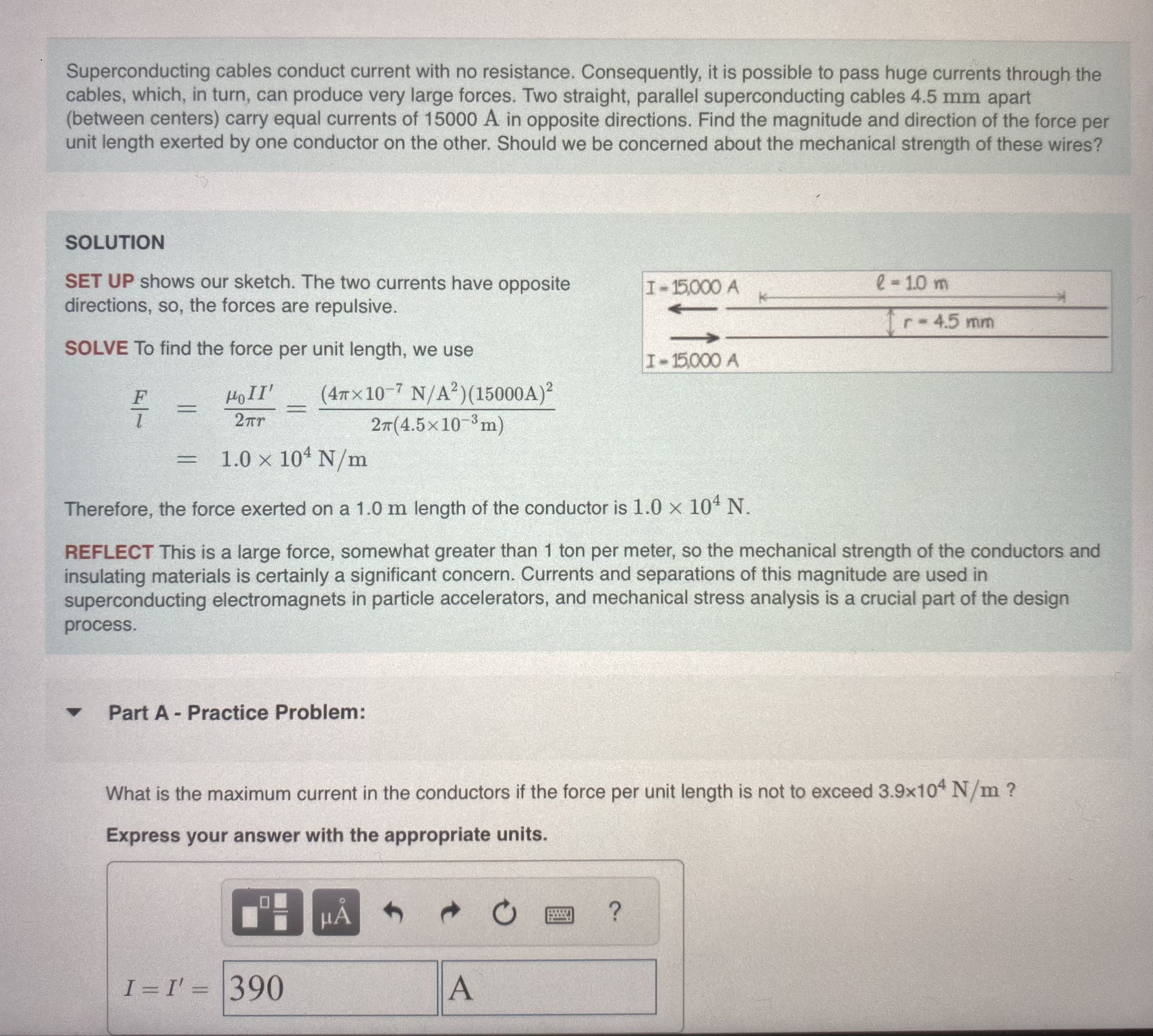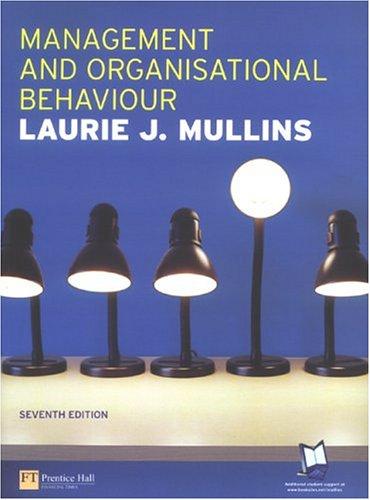Answered step by step
Verified Expert Solution
Question
1 Approved Answer
Superconducting cables conduct current with no resistance. Consequently, it is possible to pass huge currents through the cables, which, in turn, can produce very

Superconducting cables conduct current with no resistance. Consequently, it is possible to pass huge currents through the cables, which, in turn, can produce very large forces. Two straight, parallel superconducting cables 4.5 mm apart (between centers) carry equal currents of 15000 A in opposite directions. Find the magnitude and direction of the force per unit length exerted by one conductor on the other. Should we be concerned about the mechanical strength of these wires? SOLUTION SET UP shows our sketch. The two currents have opposite directions, so, the forces are repulsive. SOLVE To find the force per unit length, we use F I-15,000 A e-1.0 m K r -4.5 mm I-15,000 A HoII' (4107 N/A) (15000A) 2r 2(4.5103 m) == 1.0 104 N/m Therefore, the force exerted on a 1.0 m length of the conductor is 1.0 104 N. REFLECT This is a large force, somewhat greater than 1 ton per meter, so the mechanical strength of the conductors and insulating materials is certainly a significant concern. Currents and separations of this magnitude are used in superconducting electromagnets in particle accelerators, and mechanical stress analysis is a crucial part of the design process. A Part A - Practice Problem: What is the maximum current in the conductors if the force per unit length is not to exceed 3.9x104 N/m? Express your answer with the appropriate units. I = I'= 390 H 0 A
Step by Step Solution
There are 3 Steps involved in it
Step: 1

Get Instant Access to Expert-Tailored Solutions
See step-by-step solutions with expert insights and AI powered tools for academic success
Step: 2

Step: 3

Ace Your Homework with AI
Get the answers you need in no time with our AI-driven, step-by-step assistance
Get Started


